
Barnwood House Hospital was a private mental hospital in Barnwood, Gloucester, England. It was founded by the Gloucester Asylum Trust in 1860 as Barnwood House Institution and later became known as Barnwood House Hospital. The hospital catered for well-to-do patients, with reduced terms for those in financial difficulties. It was popular with the military and clergy, and once counted an Archbishop amongst its patients. During the late nineteenth century Barnwood House flourished under superintendent Frederick Needham, making a healthy profit and receiving praise from the Commissioners in Lunacy. Even the sewerage system was held up as a model of good asylum practice. After the First World War service patients, including war poet and composer Ivor Gurney, were treated with a regime of psychotherapy and recreations such as cricket.

The Danvers State Hospital, also known as the State Lunatic Hospital at Danvers, The Danvers Lunatic Asylum, and The Danvers State Insane Asylum, was a psychiatric hospital located in Danvers, Massachusetts. It was built in 1874, and opened in 1878, under the supervision of prominent Boston architect Nathaniel Jeremiah Bradlee, on an isolated site in rural Massachusetts. It was a multi-acre, self-contained psychiatric hospital designed and built according to the Kirkbride Plan.

Cane Hill Hospital was a psychiatric hospital in Coulsdon in the London Borough of Croydon. The site is owned by GLA Land and Property.
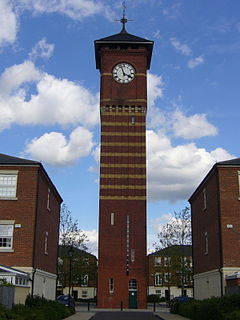
Warlingham Park Hospital was a psychiatric hospital in Warlingham, Surrey.
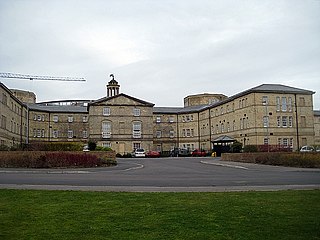
The Stanley Royd Hospital, earlier named the West Riding Pauper Lunatic Asylum, was a mental health facility in Wakefield, West Yorkshire. It was managed by the Wakefield and Pontefract Community Health NHS Trust.

Worcester State Hospital was a Massachusetts state mental hospital located in Worcester, Massachusetts. It is credited to the architectural firm of Weston & Rand. The hospital and surrounding associated historic structures are listed as Worcester Asylum and related buildings on the National Register of Historic Places.

Knowle is a village with mainly 21st century shops and businesses in the Winchester district of Hampshire, England that sits high on the left bank of the Meon between the Southampton and Portsmouth conurbations. It is in the south of the civil parish of Wickham in which it ranks in population about 25% behind Wickham. Its nearest town is Fareham, adjoining an inlet of Portsmouth Harbour approximately 3 miles (4.8 km) south-east.

Pen-y-Fal Hospital was a psychiatric hospital in Abergavenny, Monmouthshire. The main building is Grade II listed.

John Giles was a British architect. He was born in Lincoln, probably in 1830, and his family came from Branston near Lincoln. He was articled to the Lincoln architect Pearson Bellamy. He had moved to London by 1859 and with Pearson Bellamy entered a number competitions for major public buildings. Of these only one, for Grimsby Town, was successful. In London he was responsible for a number of major projects including the Langham Hotel. He also started in 1869 on the design of hospitals with the Infirmary to Hampstead Union Workhouse. After a short period of partnership with Lewis Angel, when Stratford Town Hall was built and with Edward Biven, by 1873 he was in partnership with Albert Edward Gough. They were joined in the practice by J E Trollope and they became involved in the design of Arts and Crafts housing in London's west end. Giles had business interests in the City of London and was noted in 1867 as being a Director of the Imperial Guardian Life Insurance Company.
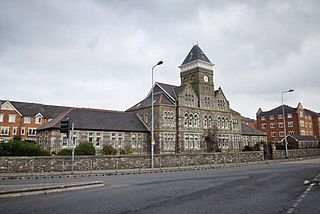
St David's Hospital is a health facility in Canton, Cardiff, Wales. It is managed by the Cardiff and Vale University Health Board. The original main block is a Grade II listed building.

Prestwich Hospital is a mental health facility at Prestwich in Greater Manchester. There is a low secure unit on site managed by the Greater Manchester Mental Health NHS Foundation Trust.

St Mary's Hospital was a mental health facility near Stannington, Northumberland, England. It was opened in 1910 and closed permanently in 1995. It was finally demolished in 2015.
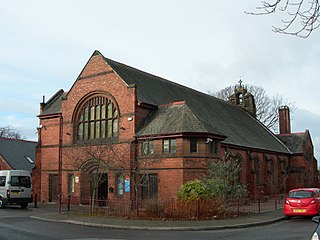
Winwick Hospital was a mental health facility at Winwick, Cheshire, England.

Clifton Hospital was a mental health facility in Clifton, York, England.
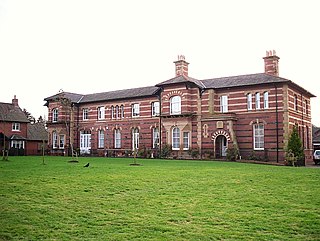
Garlands Hospital was a mental health facility at Carleton near Carlisle in Cumbria, England.

The Horton Road Hospital was a mental health facility in Horton Road, Gloucester, England.

Scalebor Park Hospital was a mental health facility at Burley in Wharfedale in West Yorkshire, England.

St Matthew's Hospital was a mental health facility on Farewell Lane, Burntwood, Staffordshire, England.

The Towers Hospital was a mental health facility in Humberstone, Leicestershire, England. The administration building, which became known as George Hine House, is a Grade II listed building.

The Royal Dundee Liff Hospital, previously known as Dundee Lunatic Asylum and Dundee Royal Lunatic Asylum, was a mental health facility originally established in 1812 in Dundee, Scotland. It was originally located in premises in Albert Street Dundee, but later moved out of the town to new buildings in the nearby parish of Liff and Benvie. Buildings at Liff included Greystanes House, which was the main building, and, Gowrie House, which was the private patients' facility. Both Grade B listed buildings.





















